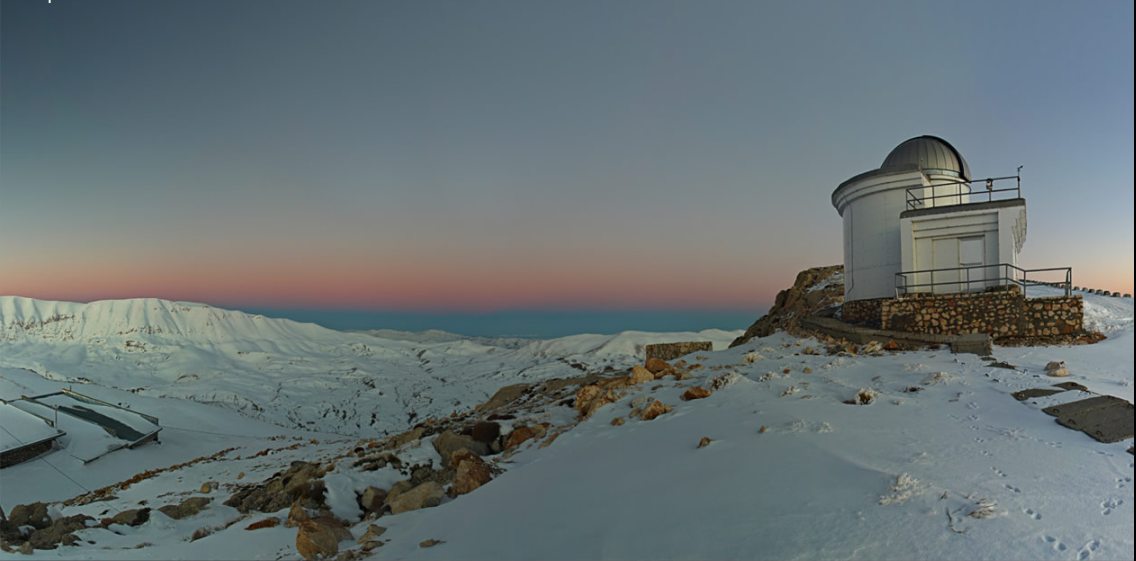Belt of Venus
The Belt of Venus, a fairly subtle effect, is a captivating pinkish glow visible extending 10 to 20 degrees above the horizon just before sunrise or just after sunset, i.e. occuring during the civic twilight.
The Belt of Venus gets its name from the ancient Greek goddess Aphrodite. She was usually depicted wearing a belt or breast band. Her Roman counterpart was Venus, thus giving us the name Belt of Venus. The interesting thing to note here is that Venus never gets far from the sun in the sky, and we either see it for a short time after sunset or a short time before sunrise. As a result, it is impossible to see the planet Venus in the Belt of Venus.
When the Sun is below the observer’s line of sight, incoming sunlight passes through more atmosphere near the horizon, which causes the observer to see pink wavelengths of light backscattered from the atmosphere.
It can be visibly seen in this amazing shot of the Turkish National Observatory by M. Raşid Tuğral:

Although visible at both sunrise and sunset, the best time to see the Belt of Venus is during the sunset, looking east, away from the setting sun in the west.
This is primarily because students won’t be awake at 5 in the morning on a usual day unless they have an 8 AM semester examination, in which case, they won’t be leaving the library before 7 AM.
As Earth rotates, sunlight is unable to reach parts of our atmosphere and the pink band turns blue towards the horizon. This is Earth’s shadow being cast on to the atmosphere, and as the shadow continues to rise, the band becomes arch-shaped and broadens out.
To properly see the Belt of Venus, all you need is a clear sky, shortly before sunrise or after sunset, and an unobstructed horizon. It is a peaceful sight to observe, and it may be visible from a few minutes up to 20 minutes.